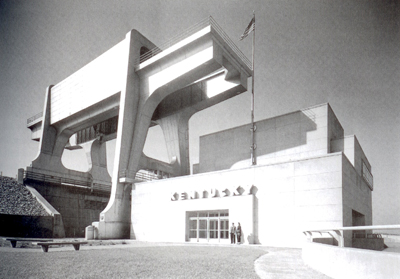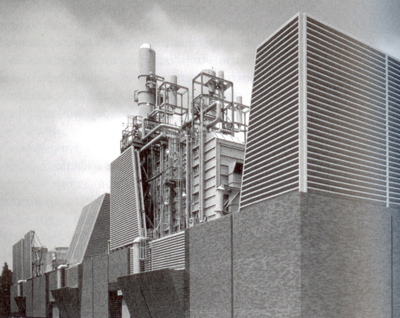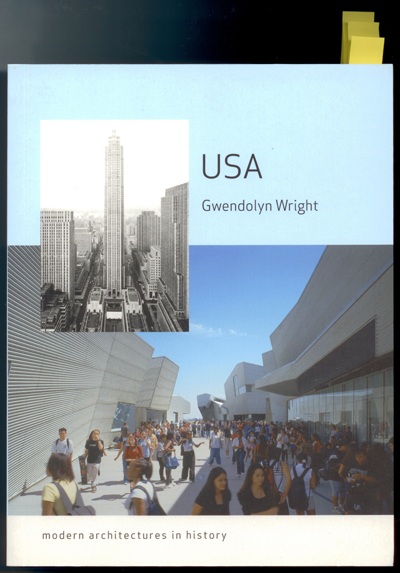
[Photo by Don Purdue]
On Wednesday night Gwendolyn Wright finished up the UW spring lecture series with an exceptional talk on the history of modern architecture. Gwendolyn is a professor at Columbia University, hosts a PBS television series and has authored a half-dozen books. She gave an eloquent hour-and-a-half discourse and displayed passion for the subject matter from beginning to end. In short, she’s a total rock-star. For those of you who missed it, we’ve included some highlights below – muddied by our incredulous memories and dubious writing skills:

Powerhouse and gantry crane, Kentucky Dam by Roland Wank, 1933-1945
The lecture emphasized the importance of pluralism in design and stressed that good architecture should develop different responses to diverse conditions. These conditions of culture, philosophy, politics, and art are always changing and fluctuating and so the architectural responses shift. Even the vernacular is always changing. The synergy in modern architecture comes from the muddy intersection of these factors.

State Capitol Bank, Oklahoma City by Roloff, Bailey, Bozalis, Dickinson, 1963
There is no “true” modernism; no “pure” form of modernism. There is no such thing as this purity that so many of us seek. Modernism was not born in 1932 as most of us were taught in school.

Home of the future by Irving Gill, 1916
Evolving architectures become hybrids – some awkward, some beautiful, but all necessary to the evolution of architecture. The varieties of modernism allow the more powerful forms to succeed. Places and times unexpectedly flourish. Some of the freak accidents become some of the greatest studies and forms of inspiration.

University of Miami by Marion Manley and Robert Law Weed, 1948-9
Most of Wright’s studies and examples were off the radar, periphery to the mainstream architectural world, authored by the unknowns; a bank in Oklahoma, an urban prison, a gantry crane in Kentucky.

Metropolitan Correction Center by Harry Weese, Chicago, 1975
Some of the greatest examples of modern architecture are the public work projects by architects in the 1800’s before such work was passed off to the engineers. This work includes dams and sewage treatment plants. Although such project types seem to lack architectural glamour they are incredible opportunities for a modern design language.

Chiller Cogeneration Plant, UCLA Los Angeles by Holt Hinshaw Jones & Ralph M. Parsons, Inc., 1992-94
There is also the diversity and unexpectedness of time. As architects we have very little control over what becomes of our buildings. What is done with your design can be different that what you intended.
The use of history in architecture is to provide this perspective of pluralism – to show what needed to be explored to get to where we are. To reinforce this idea of experimentation in the present – to mine our cultural conditions for new forms and patterns of architecture.

Hoover Dam, 1928- 1938
For more, pick up her new book about Modern Architectures in History which focuses on the USA.






